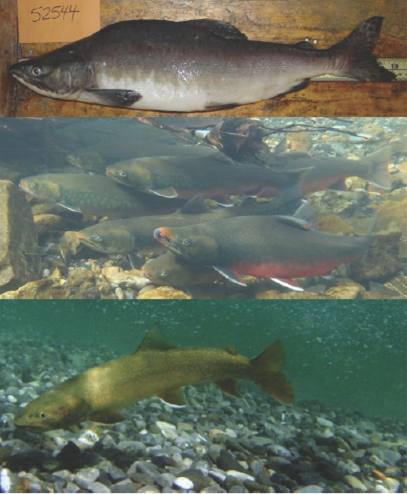Colonizing Fish Species as Threats to, and Indicators of, Ecosystem-Level Changes in the Western Arctic
Description

Freshwater, marine, and anadromous (migrating upstream or into freshwater for spawning) fishes that were once geographically limited appear to be colonizing the western Arctic, possibly as a result of climate change and its effects on ecosystems. This may lead to increased competition for habitat, predation, diseases, or parasitism among native fishes, and may destroy their genetic integrity, resulting in the need for new fisheries management practices.
This project aimed to study recent trends in possible colonizations, potential threats to native fish populations, and future vulnerabilities of those populations resulting from overlapping habitat requirements.
Results: In collaboration with a network of local fishers, researchers harvested specimens of Pacific salmon across the Mackenzie Basin in 2012 and collected biological data—length, weight, sex, reproductive state, gonad weight—and took morphological measurements. These data, along with data gathered since 1972, were used to develop a database of documented occurrences of Pacific salmon species in the Arctic and to create geographical reports of salmon occurrences in the Mackenzie Basin.
An extensive literature review was conducted to better understand the habitat requirements of Pacific salmon and other native Arctic species of the salmonid family. Results suggest that spawning salmonids are locally adapted to specific temperature patterns that differ within and among various species. Temperature monitoring is now underway with the help of fishers in the Inuvialuit Settlement Region and the Gwich'in Settlement Area (i.e., deploying/retrieving temperature sensors).
Results from this study—colonizing fish as indicators of ecosystem changes—are presented in three scientific publications to date: one in preparation, one accepted in the peer-reviewed proceedings from the 28th Lowell Wakefield Fisheries Science Symposium, and one in the peer-reviewed journal Arctic (Arctic 66(1):79-93). Related projects continue to document the biodiversity of marine fishes in the Mackenzie Basin. It remains unclear whether the observed increase in species represents colonizations in response to climate change. Preliminary results are shared in the web-based publication: Arctic Report Card 2013 .
Program Name
Aquatic Climate Change Adaptation Services Program (ACCASP)
Ecoregion(s)
Central Canada: Lake Winnipeg, Nelson River Drainage Basin
Principal Investigator(s)
James D. Reist
Fisheries and Oceans Canada
- Date modified: